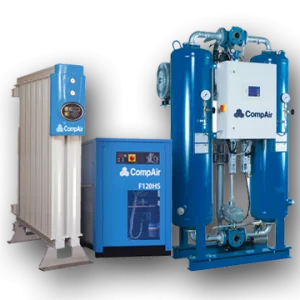

“There are a thousand hacking at the branches of evil to one who is striking at the root.” Henry David Thoreau
This quote is often how I imagine the army of consultants and experts who offer advice on the improvement of - well anything and compressed air is no exception – acts.
Sure a consultant can come in and do some tests and put together a slick report and make recommendations that aren’t practical or even effective because they are hacking at branches.
If you want results from simple actions, you need to tackle the root cause of your problems – like having a dehydration headache and reaching for an aspirin… No! Drink some water and the headache won’t come back after the aspirin wears off…
Here are my top three root causes of issues with your compressed air system problems.
Root Cause #1 – System Design and Implementation.
This covers both the design of the system and the integration of the components of the system to reach the specified performance. You could write an encyclopaedia of all the wrong ways to design a compressed air system.
Once a system has been built and it is not performing as well as desired then a careful plan to adjust the system is required. This has to be a custom plan. There is no one size fits all solution.
Root Cause #2 – Poor Integration.
Often compressed air systems are not so much designed as built like a child’s Lego project. A big catalogue of bits is opened up and those bits are picked and put together to create the system. Then when the system doesn’t perform more bits are added.
Often times the added components are not properly integrated into the original controls so we see things like idle compressors consuming power, etc. Obviously unless there is complete integration the costs for the system to produce a cubic foot of compressed air will be higher than they need to be.
Root Cause #3 – Ineffective Measurement.
In compressed air systems efficiency is measured by output per unit of power E.g. scfm/kW. It’s useful to know this across the loads the system is likely to experience and in various failure modes.
A compressed air system should be designed around optimizing this number. And a system’s performance should be measured and managed against its initial design. Instead we see companies measure the costs to run parts/components of their system.
We often find with a comprehensive measurement in place, that these savings on individual parts don’t translate into savings for the system as a whole.
Obviously, measurement against a design sometimes is impossible because there was no master design for the compressed air system. In that case, I’d work from current situation and start looking for ways to reduce your output per unit of power consumer.
If your compressed air expenses are climbing (or if you can’t measure them accurately) or you think you need to expand your system, the first thing to do is to take stock of the system as a whole. If you don’t have the necessary expertise in-house, we will audit your compressed air system for you and guide you to getting the performance you need. To get started with a no-obligation discussion call 404-363-6000 or drop us a line sales@pyebarker.com



Notifications